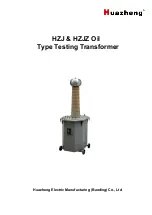
Other noise sources
Electric motors
Engine instrumentation
General noise suppression tips
(windscreen wipers, fans etc.)
Small electric motors can usually be suppressed with good low inductance bypass
capacitors.
Certain types of oil-pressure sensors and voltage regulators used in instrument systems
contain a vibrating or thermal cycling contact. These devices can only be suppressed by
isolating and screening or wiring in the same way as described for the alternator to regulator
control wire. Disc ceramic capacitors with short leads (protected with insulating sleeving)
are frequently useful but to prevent damage to instrument contacts, where the use of bypass
capacitors is attempted, values larger than 1nf should not be used.
When searching for sources of noise, some of their characteristics can be helpful in
identification:-
Petrol engine ignition noise and contact breaker noise is a sharp staccato 'plop'
varying with engine speed. It is only with this class of noise that the impulse noise
limiter incorporated within some transceivers is effective
Noise from other sources generally has a more 'mushy' sound. That from the
alternator/generator may only be troublesome over a limited range of engine
speed and can also be influenced by the state of charge of the battery.
-
The noise from instrument regulators may depend on the battery voltage, the
reading of the instrument and the length of time the system has been switched on.
For this reason, the search for noise sources must be done thoroughly to prevent
noise from apparently reappearing after the installation has been completed.
-
Electric motors generate a 'whining' sound. Do not forget to check windscreen
wipers, electric fuel pumps, heater and air conditioning fans and other motors
which operate only on an intermittent basis.
-
-
BARRETT 950 HF TRANSCEIVER
PAGE 113
















































